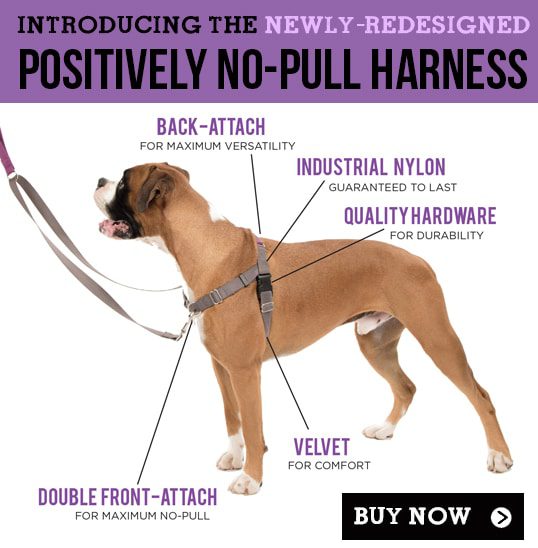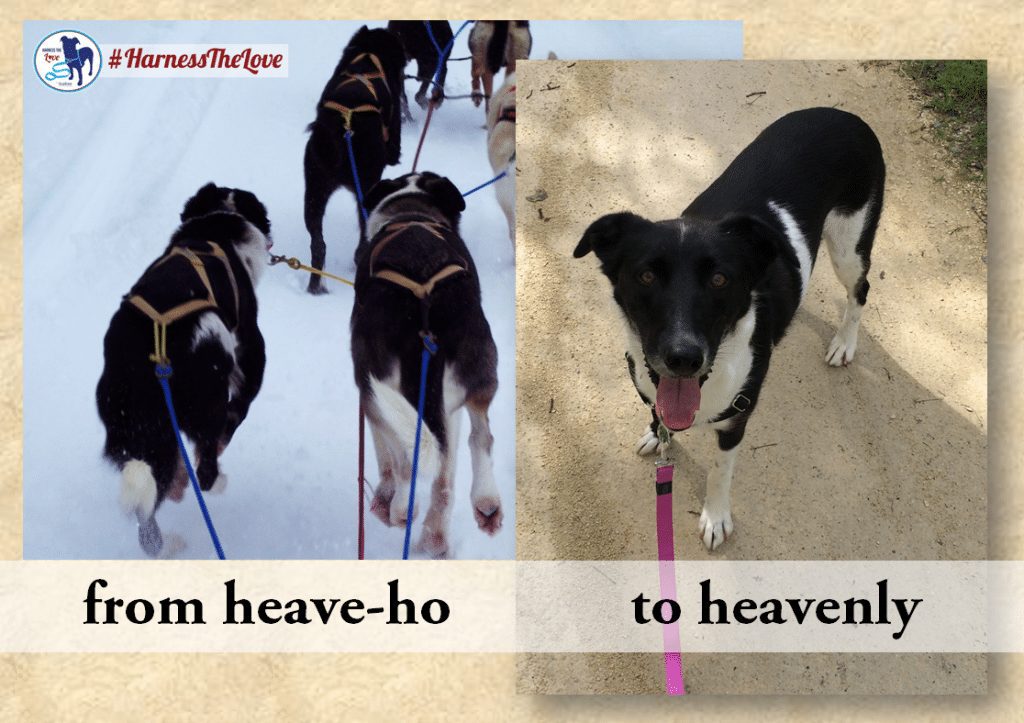Are you a pet lover who struggles with walking your dog? If so, you’ve probably encountered the terms “no-pull harness” and “regular harness” while searching for solutions. But what exactly sets these two types of harnesses apart?
In this article, we’ll highlight the critical differences between a no-pull and regular harness, helping you make an informed choice when taking your furry friend for a stroll. So please sit back, relax, and let us guide you through the wonderful world of dog harnesses!
This image is the property of positively.com.
No-pull Harness
Design and Purpose
As the name suggests, a no-pull harness is a type of dog harness specifically designed to discourage pulling during walks. While regular harnesses typically have attachment points on the back, a no-pull harness features a front attachment point, usually on the chest area. This unique design helps to redirect the dog’s pulling force towards the side, preventing them from achieving their usual forward momentum.
Front Attachment
One of the critical features of a no-pull harness is the front attachment point. This attachment allows the dog owner to have better control over their dog’s movements during walks. By clipping the leash to the front of the harness, any pulling or lunging from the dog results in the pressure being distributed evenly across the chest rather than around the neck, making it uncomfortable to pull. This positioning also enables owners to guide their dogs gently, promoting better walking behavior.
Training Aid
Apart from its design, the no-pull harness is a valuable training aid for leash manners. Dogs that tend to pull excessively can cause discomfort to themselves and their owners, making walks unpleasant experiences. By incorporating a no-pull harness into the training routine, pet owners can teach their dogs to walk calmly and politely on a leash. The harness provides a gentle feedback mechanism that helps reinforce the desired walking behavior without pulling, gradually leading to a more enjoyable and controlled walking experience for both the dogs and their humans.
Types of No-pull Harnesses
There are several types of no-pull harnesses available in the market. One typical design uses a martingale loop that tightens when the dog pulls, applying gentle pressure on the chest to discourage pulling behavior. Another type of no-pull harness features a front and back clip, allowing owners to choose the point of attachment based on their dogs’ behavior and learning progress. Additionally, some harnesses incorporate features like padding, adjustable straps, and reflective elements to enhance comfort and safety during walks.
Benefits
Using a no-pull harness offers various benefits for the dog and the owner. Firstly, it helps prevent injuries caused by excessive pulling on the leash, especially in dogs prone to neck strain or respiratory issues. Secondly, when dogs are trained to walk without pulling, it becomes easier for their owners to maintain control and ensure their safety. Furthermore, the no-pull harness promotes better walking manners, reducing the likelihood of leash aggression and creating a more peaceful environment during walks. Lastly, using a no-pull harness can strengthen the bond between the dog and its owner through positive reinforcement, as the harness enables effective communication and encourages desired behavior.
Drawbacks
While the benefits of using a no-pull harness are significant, there are a few drawbacks worth considering. One drawback is that some dogs may take time to adjust to wearing the harness, mainly if they are not accustomed to wearing any form of restraint. Owners must introduce the harness gradually and ensure it fits properly to prevent discomfort or rubbing. Some solid and determined dogs may still find ways to pull or maneuver around the front attachment point, requiring consistent training and reinforcement to achieve the desired walking behavior. Lastly, owners must choose a well-made and durable harness, as poor-quality options may fail to deter pulling effectively and could compromise the dog’s safety during walks.
Regular Harness
Design and Purpose
A regular dog harness is a standard type that primarily focuses on distributing pressure evenly across a dog’s body for comfortable restraint. Unlike the no-pull harness, the regular harness features an attachment point on the back, positioned between the shoulder blades. This design allows for a natural and balanced force distribution, ideal for dogs who do not exhibit excessive pulling tendencies during walks.
Back Attachment
The back attachment on a regular harness offers several advantages. By attaching the leash to the back of the harness, the pulling force is evenly distributed along the length of the dog’s body, reducing strain on the neck and throat. This attachment point is especially beneficial for dogs with respiratory conditions or those who are prone to neck injuries. The back attachment also allows for greater freedom of movement than a front attachment, making it suitable for dogs engaged in hiking or running.
Use in Specific Situations
Although a regular harness may not directly address pulling behavior, it serves various purposes in specific situations. For example, it can be helpful for dogs undergoing rehabilitation or recovering from injuries, as the harness provides support and stability while limiting unnecessary movement. Additionally, a regular harness allows for easy control and maneuverability during training and competition for dogs that participate in dog sports or performance activities like agility or obedience trials.
Types of Regular Harnesses
Similar to no-pull harnesses, regular harnesses come in various designs and materials to cater to different dogs’ needs. Some common types include step-in harnesses, which are easy to put on as dogs can step into them; adjustable harnesses that can be customized for an ideal fit; and vest harnesses, which provide full-body coverage and additional support. Furthermore, specialized harnesses are designed for particular dog breeds or specific activities, ensuring comfort, functionality, and safety.
Benefits
Regular harnesses offer several benefits for dogs and their owners. Firstly, they distribute pressure evenly across the body, reducing the risk of injury and discomfort caused by collars restricted to the neck area. This is especially important for dogs with respiratory issues or those prone to tracheal damage. Secondly, using a regular harness allows for better control over the dog’s movements, providing a greater sense of security and preventing escape in high-stress or crowded situations. Additionally, regular harnesses can be beneficial in medical situations, facilitating post-operative care or assisting dogs with mobility issues. Regular harnesses promote comfort, safety, and versatility in various settings.
Drawbacks
While regular harnesses are generally beneficial, there are a few drawbacks. One potential disadvantage is that back attachment points may inadvertently encourage pulling behavior in dogs more prone to do so. Since the pressure is applied to the dog’s body instead of their chest, it may not discourage pulling as effectively as a no-pull harness. Moreover, some regular harnesses may have limitations in terms of adjustability, potentially leading to improper fit and reduced effectiveness. Owners must choose the right size and ensure a secure fit to prevent chafing, rubbing, or potential slipping. Additionally, regular harnesses may not provide optimal control in certain situations requiring immediate redirection or guidance, especially for dogs with a strong prey drive or leash reactivity.
In conclusion, no-pull and regular harnesses offer unique features and benefits depending on the specific needs of dogs and their owners. While a no-pull harness focuses on discouraging pulling and promoting proper leash manners, a regular harness provides comfort, support, and versatility.
By understanding each type’s design, purpose, benefits, and drawbacks, dog owners can make an informed decision and choose the most suitable harness for their furry companions. Whether minimizing pulling behavior or ensuring comfort and control, the proper harness can enhance the walking experience and contribute to a healthier relationship between dogs and their owners.
This image is the property of images.squarespace-cdn.com.











































